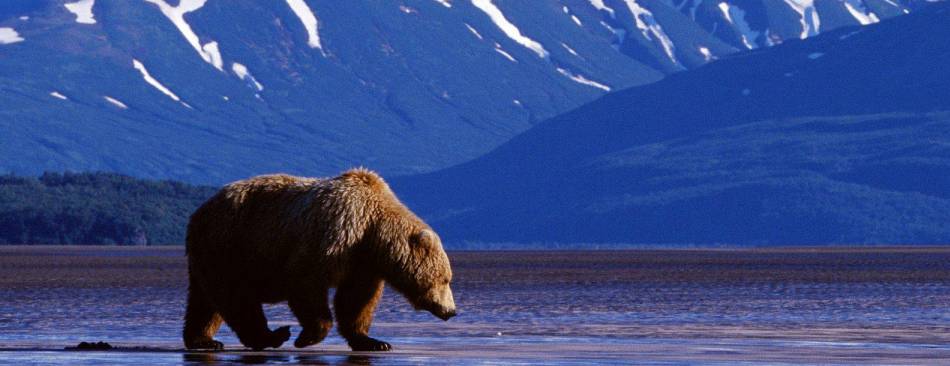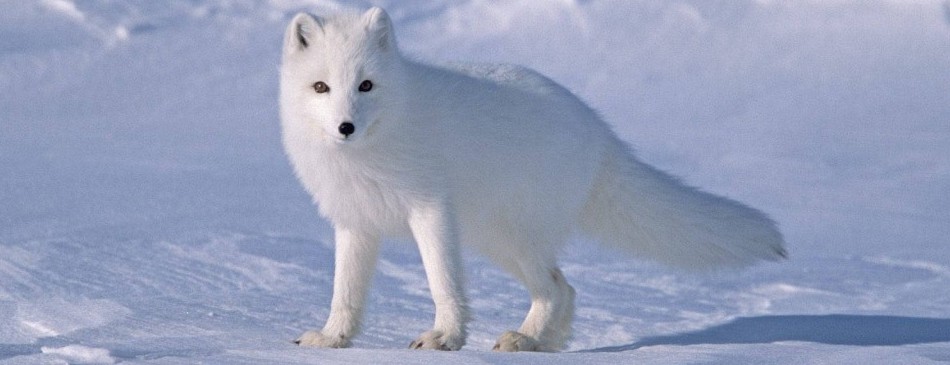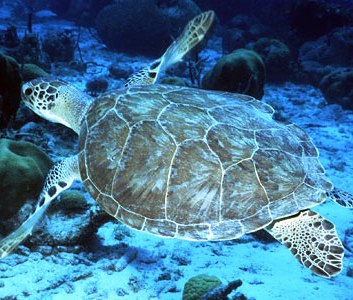Only four species of turtles, all marine turtles, have
been documented within the state’s borders. Terrestrial
and freshwater aquatic species of turtles do not occur
in Alaska. Marine turtles are occasional visitors to
Alaska’s Gulf Coast waters and are considered a natural
part of the state’s marine ecosystem.
Between 1960 and 2007 there were 19 reports of
leatherback sea turtles (Dermochelys coriacea), the
world’s largest turtle. There have been 15 reports of
Green sea turtles (Chelonia mydas). The other two are
extremely rare, there have been three reports of Olive
ridley sea turtles (Lepidochelys olivacea) and two
reports of loggerhead sea turtles (Caretta caretta).
Currently, all four species are listed as threatened or
endangered under the U.S. Endangered Species Act.
Sea turtles are large, aquatic reptiles with forelimbs specially modified for swimming. These front flippers are significantly larger than the back flippers. Their shell is composed of two pieces, the top, or carapace, and the bottom, or plastron. In most sea turtle species, the shell is made up of bony plates covered with horny shields. Green sea turtles are the largest hard-shelled sea turtle reaching lengths of over 3 feet and weighing 300-350 pounds. They have a relatively small head compared to their body size. Their carapace is smooth and its color varies between individuals. It may be a shade of black, gray, green, brown, or yellow. The plastron is yellowish white. They have one claw on each flipper.
Green sea turtles are herbivorous eating mostly algae and seagrasses. It is thought that this diet gives their fat its green hue. As hatchlings and juveniles, they feed on pelagic plants and animals near the surface in offshore areas. Adults transition to an exclusively herbivorous diet and feed in nearshore benthic habitats.
Green sea turtles undergo their first migration as hatchlings when they travel from their natal beaches to offshore areas to grow. Once the juveniles mature, they migrate to shallower coastal waters. In breeding years, adult females migrate from their coastal foraging areas to nesting beaches. These migrations may be hundreds to thousands of kilometers each way. The maximum migration is about 3,000 kilometers.
Green sea turtles reach sexual maturity between 20-50 years of age. After maturing, females nest every 2-4 years on their natal beaches. During the nesting season, females lay an average of 5 clutches of eggs with approximately two weeks between each nesting. Each clutch has an average of 135 eggs. Eggs hatch approximately 2 months after being laid. The hatchlings, only 2 inches long, emerge from the nest and move into the water. After the hatchlings enter the ocean, it is believed that they travel to offshore areas to live for several years. Once the juveniles reach a certain size or age, they travel to nearshore foraging areas. Green sea turtles use a variety of habitats. Oceanic beaches are used for nesting. Females need open beaches with a gentle slope and minimal disturbance. Adults use benthic foraging areas in coastal waters. They are generally attracted to bays and lagoons with a high density of seagrasses or algae. Hatchlings and juveniles spend their time in offshore convergence zones. This species is distributed globally. Green sea turtles are most commonly found in tropical and subtropical waters along the coasts of continents and islands. In the eastern North Pacific, green sea turtles are seen from Baja California to southeast Alaska. In Alaska, there have been 15 green sea turtle sightings since 1960. The green sea turtle has been the most common species in Alaskan waters since 1993, but most of these occurrences were dead turtles. The green sea turtle population is much lower than historic levels. Despite their low abundance, the population seems stable. The breeding populations of green sea turtles in Florida and on the Pacific coast of Mexico are listed as endangered under the Endangered Species Act (ESA). The remaining populations are listed as threatened.
The population of green sea turtles has declined dramatically over the last 100-150 years. During this time, there has been an estimated 48–65% decline in the number of nesting females. This decline is attributed to the long-term harvest of eggs and adults on nesting beaches and adults and juveniles in foraging areas.
|








